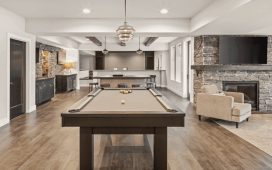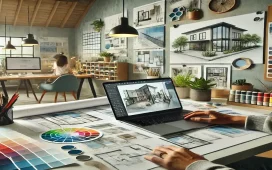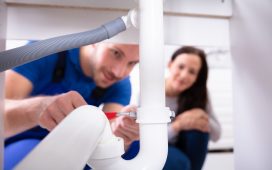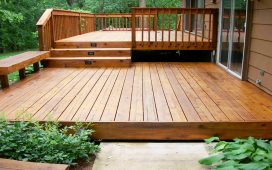Designing a swimming pool is much more than just selecting a shape and installing it in a backyard. Pool design is a thoughtful process that takes into account several assumptions, considerations, and factors to create a functional, aesthetically pleasing, and safe structure. The assumptions made during the design process impact the pool’s longevity, usability, and how well it integrates with the surrounding environment. Here, we explore the key assumptions underlying a swimming pool design.
1. Purpose of the Pool
The first and most fundamental assumption in swimming pool design is its purpose. Is the pool intended for recreational use, exercise, relaxation, or all of the above? Different purposes demand different design approaches. For instance:
- Recreational pools are often designed with varying depths to accommodate children and adults, as well as space for water features or slides.
- Exercise pools, such as lap pools, are generally long, narrow, and shallow to facilitate uninterrupted swimming.
- Luxury or relaxation pools might include features like spas, infinity edges, and seating areas, focusing more on aesthetics and comfort.
The pool’s primary use guides decisions around size, shape, depth, and additional features.
2. Location and Environmental Factors
The location of the pool is another critical assumption when planning a swimming pool design. Designers need to account for factors like climate, soil conditions, and the local landscape. Some key considerations include:
- Climate: Pools in hotter climates may need additional shading options or features like cooling systems, while pools in cooler regions might require heating systems to maintain comfort.
- Soil type: Different soil types influence the pool’s foundation. For example, sandy or clay-based soil may require additional reinforcement or special construction techniques to ensure the pool’s stability.
- Slope and drainage: The natural slope of the land impacts water drainage and the structural integrity of the pool. Designs need to accommodate natural water flow to avoid pooling water or erosion around the pool.
By assuming the pool will be in a specific environmental context, the design can mitigate potential issues related to weather and landscape, ensuring the pool lasts longer and functions properly.
3. Available Space and Pool Shape
The assumption of available space influences the pool’s design, including its shape, size, and layout. Not all backyards or landscapes can accommodate large or uniquely shaped pools, so designers work with the assumption of how much space is available and how it can be best utilized.
- Rectangular pools are common in smaller spaces or for lap swimming.
- Freeform pools are popular in larger, irregularly shaped areas where a more organic shape can blend into the natural surroundings.
- Infinity pools and natural pools may require more space but provide a high-end, luxurious aesthetic.
Space also affects the placement of features like decking, lounge areas, and pool equipment, ensuring there is enough room for these without crowding the yard.
4. Safety Considerations
A key assumption in pool design is that safety is a priority, especially for residential pools. Designers must incorporate features that reduce the risk of accidents and comply with local safety regulations. These safety considerations include:
- Fencing and barriers: Most jurisdictions require some form of fencing around pools to prevent unauthorized access, particularly by children. Designers assume that this will be needed and plan accordingly.
- Depth and slope: The depth and slope of the pool should be gradual and accommodate different activities, from shallow areas for wading to deeper sections for diving (if allowed).
- Non-slip surfaces: Decking and pool surrounds must be designed with slip-resistant materials to minimize the risk of falls.
Assuming that safety is non-negotiable, the design of the pool prioritizes protective features that safeguard users.
5. Aesthetics and Integration with Surroundings
The assumption of how the pool will integrate with its surroundings plays a crucial role in the design process. A pool is often a focal point of a backyard or garden, so it needs to complement the existing landscape and architecture. Designers will assume that the pool should blend seamlessly with its environment and take steps to achieve this through various means:
- Color schemes: The color of the pool lining, tiles, and surrounding features should enhance the overall look of the area.
- Lighting: Pool lighting can accentuate certain features and create a specific mood for nighttime use.
- Landscaping: Incorporating greenery, rocks, or water features can enhance the natural feel of the pool and its surroundings.
By assuming that aesthetics matter as much as functionality, designers can create a visually appealing space that enhances the overall property value.
6. Budget Constraints
An assumption about budget is always part of the pool design process. While homeowners may want luxurious features like infinity edges, waterfalls, or custom lighting, budget constraints can limit these options. Therefore, designers must balance the client’s desires with realistic cost expectations.
- Materials: The choice between concrete, fiberglass, or vinyl significantly affects the cost of the pool. Concrete tends to be the most expensive, while vinyl is more budget-friendly.
- Features: Add-ons such as heaters, covers, or water features increase the overall cost.
- Ongoing costs: The long-term cost of maintaining the pool, such as heating, cleaning, and water treatment, should be considered in the design phase.
Assuming a fixed budget ensures that the pool remains affordable without compromising too much on quality or functionality.
7. Future Maintenance Requirements
Every pool design assumes that the pool will require maintenance, and the ease of maintaining the pool is a vital consideration in the design process. This includes planning for:
- Filtration systems: Proper filtration ensures that the water stays clean and clear. Designers often assume that a high-quality filtration system will be installed to reduce the time and cost of maintenance.
- Access to equipment: Pool equipment, such as pumps and heaters, should be easily accessible for regular maintenance and repairs.
By factoring in maintenance needs from the start, the design can minimize future headaches for the homeowner.
The assumptions underlying swimming pool design are multifaceted, covering aspects from the pool’s purpose to its location, safety, and long-term maintenance. By addressing these assumptions during the design phase, homeowners can ensure that their pool is not only beautiful but also functional, safe, and built to last. Whether it’s for relaxation, recreation, or exercise, a well-designed pool enhances the property and provides endless enjoyment.
This article was written by an expert at Pool Stop Custom Pools. Pool Stop has built custom swimming pools for the DFW region for more than 20 years. Living Magazine’s readers have consistently voted us “Best concrete pool builder Dallas“, in Rockwall, year after year. We strive to offer the community the latest in design and construction technologies. Our team is made up of some of the most highly educated and experienced professionals in the business. Pool Stop provides a wide range of services, including: New Pool Design & Pool Construction; Retail Pool Store; Pool Supplies; Water Testing and Pool Cleaner Repair. Visit us today to receive a FREE Water Analysis.













